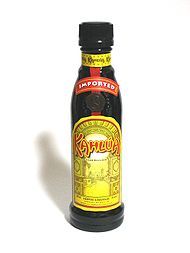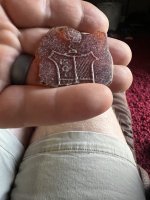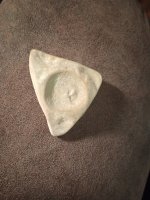doc-d
Bronze Member
Exploring Ecuador's Sunken Wrecks
https://tribelr.com/posts/adventure-travel-exploring-ecuador-s-sunken-wrecks?location_id=2&nsl=1
Adventure Travel: Exploring Ecuador's Sunken Wrecks
By Mary Teresa Fowler September 15 2015 Shipwreck
Over the centuries, countless ships have been wrecked off the coast of Ecuador. Read on to learn more about the country's most significant shipwrecks, explore the fascinating stories, and discover their sunken treasures.
Each of Ecuador's shipwrecks has its own tale. Although they might have different beginnings, the stories never ended well -- in sunken ships and lost lives. The ancient vessels, however, are still part of real life adventure.
Modern Explorers
Interested adventurers continue to search for the location of these lost ships and contents. These modern day explorers include everyone from fun-loving thrill seekers to serious treasure hunters to well-researched, professional types who are fascinated with old ships, diving adventures, or historical data. They are all seeking the locations of several old Spanish galleon wrecks.
Everyone has their own plan, approach, and method of preparation for exploring sunken ships. They might pore over treasure maps in atlases, use Google Earth sea charting software, study scholarly research and maritime history, or gather together equipment like a hand-held diver magnetometer, a UW detector, and other underwater detectors. Each adventurer is thrilled with the opportunity to work off Ecuador's coast. All of them dream about surfacing the with a major find.
Photo Source: Ecuador & Galapagos Travel News - Sangay.com
Sunken Treasures
There is no shortage of sunken wrecks to explore in Ecuador. A single chart listed at least 78 shipwreck sites -- 30 in Galapagos, 27 in Manta, 13 in Esmeraldas, 4 in Guayas, 2 in Bahia de Caraquez, and 2 in Salinas. Of course, not every wreck is going to be a golden treasure trove. Yet without a doubt, these ships and their bounty are real treasures.
They allow us to get a glimpse and -- if we are lucky -- to hold part of a long-ago yesterday in our hands. The Spanish galleons were known to carry treasures like gold and silver, but they also brought general goods and supplies (peanuts, sweet potatoes, sugar cane, etc.).
Handle With Care
Whatever their treasure, adventurers everywhere have always been gripped by tales of golden galleons, stormy seas, fierce battles, and heroic characters. Contemporary treasure hunters should keep in mind, however, that safety must always be a priority. Exploring sunken ships is not meant to be a solitary pursuit.
Approach the adventure with care and caution, under knowledgeable guidance. Treat sport dives and charter trips as adventurous, but serious, pursuits. Follow any government regulations about shipwreck exploration or treasure hunting.
Ecuador's Shipwrecks
Capitana
Capitana Coin - Collectors Society
In 1654, the immense Capitana or Jesús María de la Limpia Concepción, known as Queen of the South Seas, was grounded on the reefs off Chanduy, Ecuador. The 130-foot long ship had a beam of 40 feet and weighed 1,150 tons. The Capitana was the flagship of the Viceroyalty of Peru and the South Sea Armada (an area covering Peru, Bolivia, Chile, and Ecuador). The loss of this lead vessel was the biggest disaster ever for the Spanish South Seas (Pacific) Fleet.
As well as carrying 60 guns (44 bronze), it is believed that the ship carried treasure amounting to 10 million pesos. In fact, Capitana was dangerously overloaded with tons of treasure and 600 passengers. The ship rode deep in the water with its keel 24 feet below the surface. The Capitana was not located again until three centuries later when salvage began at the site.
Consolación
The Consolación (Isla del Muerto or Dead Man's Island shipwreck) sank in 1681 off Ecuador's Santa Clara Island. The original plan was for the ship to leave Lima's port of Callao and travel as part of the South Seas Fleet. In the end though, the Consolación was delayed and traveled alone.
At the Gulf of Guayaquil near modern-day Ecuador, the Consolación encountered English pirates, led by Bartholomew Sharpe, who caused the Spanish galleon to sink on the reef. Before the pirates could get to the ship, however, the crew set fire to the Consolación. Then they tried to escape to the nearby island -- but without success.
Sharpe and his men were never able to recover the ship's treasure. It stayed undisturbed until salvage attempts in recent years. The manifest of the Consolación stated the value of her registered cargo as at least 146,000 pesos. In addition, it was customary for ships of that era to carry significant contraband.
Leocadia
On November 16, 1800, the Leocadia struck a shoal and broke apart 100 yards from the beach at Punta Santa Elena, Ecuador. One hundred and forty lives were lost in the disaster. The ship had left from Paita, Peru, as part of a convoy of vessels bound for Panama. Within the next year, the Spanish had salvaged at least 90% of its registered treasure, but that still left 200,000 pesos for future explorers.
Sailing into Adventure
Just as the sailors of Ecuador's sunken ships were inspired to explore the New World, today's adventurers are driven to capture the spirit of exploration, pursue new passions, and follow their own dreams.
- See more at: https://tribelr.com/posts/adventure...ecks?location_id=2&nsl=1#sthash.4XzPfz8b.dpuf
https://tribelr.com/posts/adventure-travel-exploring-ecuador-s-sunken-wrecks?location_id=2&nsl=1
Adventure Travel: Exploring Ecuador's Sunken Wrecks
By Mary Teresa Fowler September 15 2015 Shipwreck
Over the centuries, countless ships have been wrecked off the coast of Ecuador. Read on to learn more about the country's most significant shipwrecks, explore the fascinating stories, and discover their sunken treasures.
Each of Ecuador's shipwrecks has its own tale. Although they might have different beginnings, the stories never ended well -- in sunken ships and lost lives. The ancient vessels, however, are still part of real life adventure.
Modern Explorers
Interested adventurers continue to search for the location of these lost ships and contents. These modern day explorers include everyone from fun-loving thrill seekers to serious treasure hunters to well-researched, professional types who are fascinated with old ships, diving adventures, or historical data. They are all seeking the locations of several old Spanish galleon wrecks.
Everyone has their own plan, approach, and method of preparation for exploring sunken ships. They might pore over treasure maps in atlases, use Google Earth sea charting software, study scholarly research and maritime history, or gather together equipment like a hand-held diver magnetometer, a UW detector, and other underwater detectors. Each adventurer is thrilled with the opportunity to work off Ecuador's coast. All of them dream about surfacing the with a major find.
Photo Source: Ecuador & Galapagos Travel News - Sangay.com
Sunken Treasures
There is no shortage of sunken wrecks to explore in Ecuador. A single chart listed at least 78 shipwreck sites -- 30 in Galapagos, 27 in Manta, 13 in Esmeraldas, 4 in Guayas, 2 in Bahia de Caraquez, and 2 in Salinas. Of course, not every wreck is going to be a golden treasure trove. Yet without a doubt, these ships and their bounty are real treasures.
They allow us to get a glimpse and -- if we are lucky -- to hold part of a long-ago yesterday in our hands. The Spanish galleons were known to carry treasures like gold and silver, but they also brought general goods and supplies (peanuts, sweet potatoes, sugar cane, etc.).
Handle With Care
Whatever their treasure, adventurers everywhere have always been gripped by tales of golden galleons, stormy seas, fierce battles, and heroic characters. Contemporary treasure hunters should keep in mind, however, that safety must always be a priority. Exploring sunken ships is not meant to be a solitary pursuit.
Approach the adventure with care and caution, under knowledgeable guidance. Treat sport dives and charter trips as adventurous, but serious, pursuits. Follow any government regulations about shipwreck exploration or treasure hunting.
Ecuador's Shipwrecks
Capitana
Capitana Coin - Collectors Society
In 1654, the immense Capitana or Jesús María de la Limpia Concepción, known as Queen of the South Seas, was grounded on the reefs off Chanduy, Ecuador. The 130-foot long ship had a beam of 40 feet and weighed 1,150 tons. The Capitana was the flagship of the Viceroyalty of Peru and the South Sea Armada (an area covering Peru, Bolivia, Chile, and Ecuador). The loss of this lead vessel was the biggest disaster ever for the Spanish South Seas (Pacific) Fleet.
As well as carrying 60 guns (44 bronze), it is believed that the ship carried treasure amounting to 10 million pesos. In fact, Capitana was dangerously overloaded with tons of treasure and 600 passengers. The ship rode deep in the water with its keel 24 feet below the surface. The Capitana was not located again until three centuries later when salvage began at the site.
Consolación
The Consolación (Isla del Muerto or Dead Man's Island shipwreck) sank in 1681 off Ecuador's Santa Clara Island. The original plan was for the ship to leave Lima's port of Callao and travel as part of the South Seas Fleet. In the end though, the Consolación was delayed and traveled alone.
At the Gulf of Guayaquil near modern-day Ecuador, the Consolación encountered English pirates, led by Bartholomew Sharpe, who caused the Spanish galleon to sink on the reef. Before the pirates could get to the ship, however, the crew set fire to the Consolación. Then they tried to escape to the nearby island -- but without success.
Sharpe and his men were never able to recover the ship's treasure. It stayed undisturbed until salvage attempts in recent years. The manifest of the Consolación stated the value of her registered cargo as at least 146,000 pesos. In addition, it was customary for ships of that era to carry significant contraband.
Leocadia
On November 16, 1800, the Leocadia struck a shoal and broke apart 100 yards from the beach at Punta Santa Elena, Ecuador. One hundred and forty lives were lost in the disaster. The ship had left from Paita, Peru, as part of a convoy of vessels bound for Panama. Within the next year, the Spanish had salvaged at least 90% of its registered treasure, but that still left 200,000 pesos for future explorers.
Sailing into Adventure
Just as the sailors of Ecuador's sunken ships were inspired to explore the New World, today's adventurers are driven to capture the spirit of exploration, pursue new passions, and follow their own dreams.
- See more at: https://tribelr.com/posts/adventure...ecks?location_id=2&nsl=1#sthash.4XzPfz8b.dpuf



 ??
?? 



 np
np



